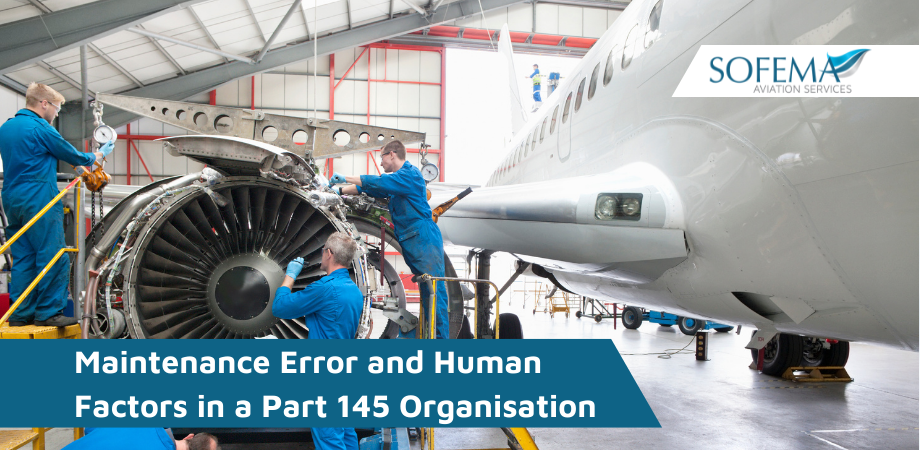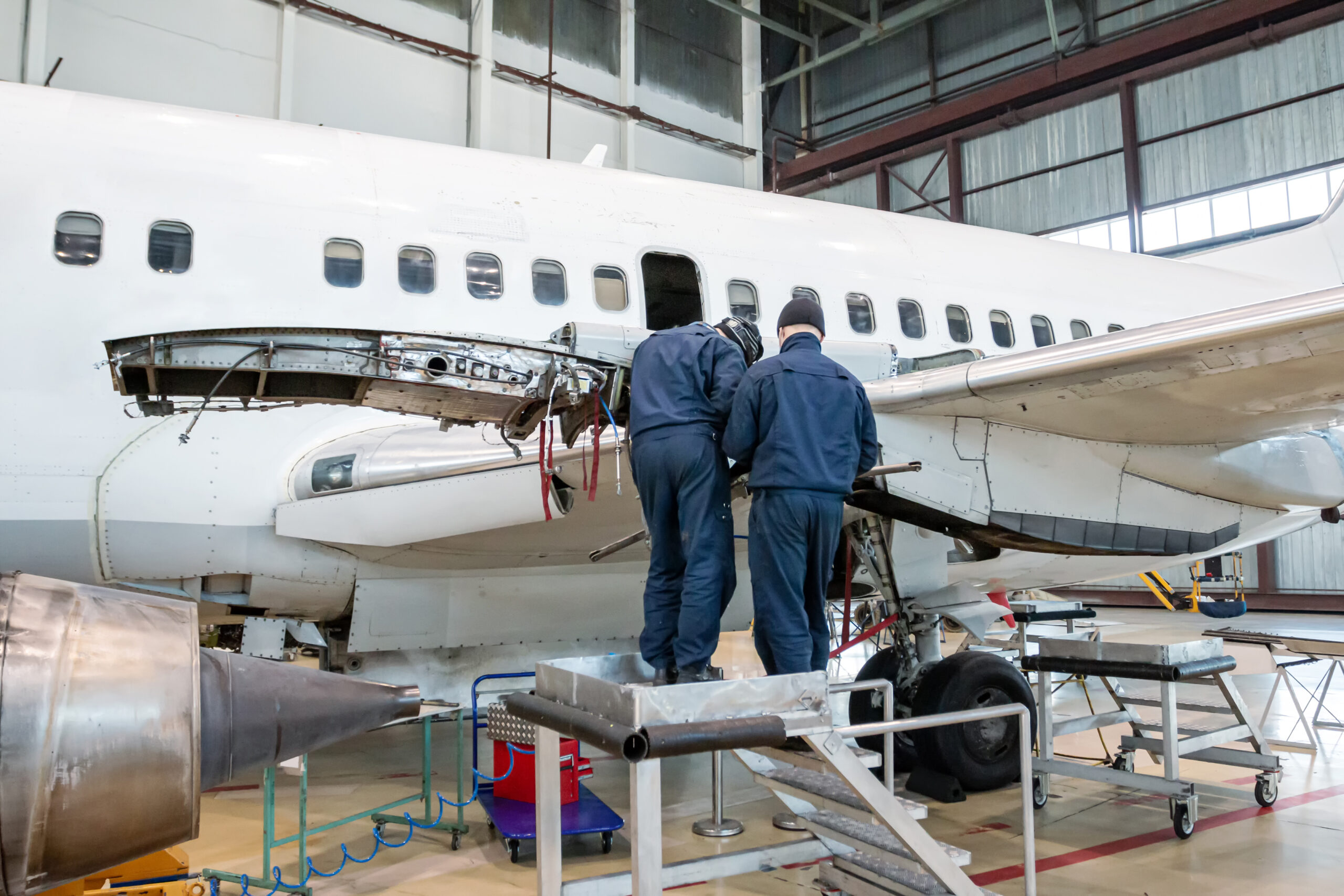Sofema Aviation Services (SAS) takes a look at the relationship between Maintenance Error and Human Factors in a Part 145 Organisation in support of MEDA Investigation (Maintenance Event Decision Aid).
Introduction: Aircraft Maintenance Errors & Aviation Human Factors Training
Empirical evidence has shown that under normal conditions, we can make between three to seven errors per hour. Under stressful, emergency, or unusual conditions, we can make an average of 11 errors per hour.
Whilst Human Error is an inevitable consequence of our human engagement with the aviation system or various business processes, we should not be willing to accept the term “Human Error” as an acceptable root cause of an event.
How to avoid aircraft accidents due to maintenance errors? Continue reading & find out.
Consider the challenges related to Root Cause Analysis (RCA)
When we perform RCA it is not unusual to come up against causal factors which show a specific relationship between the event and one or more human factors.
Note: that for each HF identified there is an underlying reason – essentially means that Human Factors cannot, therefore, be a “Root Cause”.
Please consider that in general, we can say that ALL Human Factors can potentially be managed in a way that either precludes or mitigates potential negative outcomes.
Let’s consider why Is “Human Error” is NOT an Acceptable Root Cause?
Essentially it is because the acceptance that human error was involved in an unwelcome event may imply that whatever has happened is beyond our control and it can therefore happen again! (which clearly is not an acceptable outcome.)
Reality Check – Whenever we encounter an incident or accident which involves a trained and competent person who is engaged in the normal work environment, experiencing or implicated as the direct cause of such an event, we often find also that there are also additional system factors involved.
Effectiveness of Change Considerations – In the final analysis solutions that address human error directly such as remediation and human factors in aviation maintenance training, are weaker solutions whereas solutions that address the system such as changes in the process or procedure are usually much stronger.
Taking Effective Steps to Understand System Factors – It is essential that we achieve an understanding of all the various system factors which in some way have impacted the event so that we are able to develop appropriate mitigations to address the exposures & that we can find ways to either remove them or mitigate their effects.
Within every organisation the goal must be to raise the level of safety so that we negate or minimize the possibility of seeing similar events re occurring.
- Accepting that in normal circumstances people do not deliberately make mistakes may help.
- Please consider that invoking outcomes which involve discipline, counselling, or retraining is not the best solution.
o Whilst such actions may in the case of the individual involved, impact the possibility of the event re-occurring. This does not mean that it cannot happen again (this time with other actors in place).
Our goal therefore should be to increase safety in the long term and It’s vitally important to understand the various system factors which have acted (or have the potential to act) as latent conditions or precursors and which have as a result facilitated human error and to develop and deliver system solutions.
Note: the designated persons responsible for the MEDA Investigation should not focus on HF as a terminal root cause but rather to consider it as a contributory factor.
Why Aircraft Maintenance Errors Occur?
Unfortunately, competent trained persons continue to make HF-related errors even when accomplishing relatively straightforward tasks.
Whilst we are able when fully cognizant to recognize our errors, the potential exists for missed errors to compound into fully realised outcomes.
Types of Human Factor Errors typically identified during RCA activities:
- Violations – Violations may be either organisationally optimising or personally optimising, moreover they may be routine exceptional, or flagrant.
- Work Place Attitudes – Attitude within the workplace can directly impact events occurring in combination with other factors or can impact the effectiveness of the climate-related to the development or otherwise of positive Safety Culture.
- Organisational System Constraints – Typically related to limitations which may be in place within the workplace as well as issues caused by the organisational structural considerations.
- Management & Supervisory Failures – This type of failure can be found to relate to insufficient availability related to elapsed time or other time-related constraints, Insufficient manpower, or resources.
- Policy and Procedure Related.
- Competence – Related to a training shortfall.
Environmental Factors
- A number of environmental-related issues may impact an event or serve as contributing factors for example related to weather Heat or Cold (Ice / Snow) issues associated with poor lighting.
Personal Factors
- These can directly either affect the individual or be caused by the individual for example – Fatigue – Stress (Possibly caused by work-related pressure) several types of Illness can cause human deterioration which can also contribute to events.
Simple Human Error could also be a factor related to attention / memory, judgment, knowledge competence, or skill in Dealing with Root Cause Analysis.
The development of an understanding of the various Human factors (HF) interactions allows for the potential of a balanced approach during MEDA Investigations related to the understanding of non-technical errors.
- Factors such as Fatigue, Stress, Workload, Communications, Distractions, Focus, and Situation Awareness all have the potential to impact an event and lead to a negative outcome.
Applying the Knowledge – Recreating and understanding the specific environment within which the incident occurred or may occur is a significant element in understanding the HF interaction.
Re-occurring HF events raise concerns for example Failure to Follow Procedures, Complacency, Distraction, and even Boredom.
Human sciences which support an understanding of Human Factors include psychology, (the scientific study of the human mind and its functions, especially those affecting behaviour in a given context.) anthropology (the study of human societies and cultures and their development), physiology (the branch of biology that deals with the normal functions of living organisms and their parts) and medicine.
Delivering Change – Knowledge related to Human Factors is gathered and analysed to support changes to the design, operation, construction, or maintenance of a product, or process.
Next Steps
Follow this link to our Library to find & Download related documents for Free.
Note – Sofema Aviation Services offers the following training integrating both Human Factor and Safety Management System Elements fully compliant with EASA GM2 145.A.30 (e) HF & SMS Training Requirements:
For additional questions or to register please email team@sassofia.com
Tags:
145 organisations, aviation, aviation human factors, EASA Part 145 Organisation, Human Factors, Maintenance Error, Maintenance Error & Human Factors, Maintenance Event Decision Aid, MEDA, RCA, Root Cause Analysis, SAS blogs





